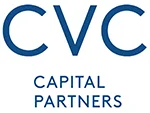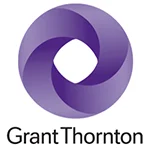 Ryan Barr Ryan Barr |
“What we got here is a failure to communicate.” That famous line from “Cool Hand Luke” tells us a lot about the disastrous consequences that can result from poor communication, but what it doesn’t tell us are the specific elements of ineffective interaction. Clearly, the success of any collective endeavor—be it personal, social or professional—hinges on the ability of its participants to share information clearly and transparently. We’re now embarking on such an endeavor as we emerge from the pandemic, and to be successful, we must unpack the idea of success. Understanding what that is—and what it’s not—will be critical to returning to normalcy in the coming months.
An unprecedented challenge
The global pandemic challenged each one of us as individuals, families, employers, employees and humans. We had to learn how to live, work and communicate in a world that shrunk overnight. Re-examining everything we do from getting basic essential supplies to entertainment to engaging with friends and family to looking out for those that could not do so themselves. As we begin to see doors open, people gather, companies expand and life accelerate forward, there are critical learnings from past crises over the past twenty years we must heed, permanently adopt, and build upon: transparency, education and communication.
Case studies in miscommunication
In 2001, we saw the first of several excessive market accelerations come to a rapid end, with the collapse of the dot-com bubble. Wall Street and private investors jumped on a six-year rollercoaster that saw start-up companies being funded on the mere hopes and dreams of young entrepreneurs. While Amazon, eBay and Priceline flourished, Pets.com, Webvan and others crashed spectacularly. There were many causes of the burst bubble, but the simple lack of transparency in the business models caused confusion, distrust and ultimately, failure.
| This article is featured in O'Dwyer's Aug. '21 Financial PR/IR & Professional Services PR Magazine (view PDF version) |
Webvan should’ve revolutionized the grocery business well before Amazon became our go-to resource for everything during the pandemic. The concept was simple: let people order groceries online and Webvan would deliver them right to your door. Today, there are more than two dozen companies that do exactly this in every market, but in 1999 this was unheard of. How could a company possibly build an entire fulfillment infrastructure—while still being price sensitive—and fail to make people believe? The answer lies in the confluence of a few missteps, including a lack of transparency in the business model; the inability to educate consumers on the service; and an overall failure in communicating with stakeholders. Unfortunately, all of these had a part in ending the company’s brief three-year life. Two decades later, Webvan founder Louis Borders—who also founded Borders Books—is trying again with the launch of HDS Global. The company has raised capital and built an automated logistics and fulfillment center outside Indianapolis. Time will tell if Borders has learned from the mistakes from his past or if history is destined to repeat itself.
In 2008, we again experienced the self-inflicted wounds of Wall Street when the derivatives market collapsed under the weight of an inflated housing market that simply couldn’t be sustained. As supply of new homes quickly outpaced the demand for new houses, rising energy prices pressured individuals and exorbitant levels of sub-prime lending reached a breaking point, historic Wall Street Banks disappeared over night. Lehman Brothers became the poster child for This Could Happen to You. When the derivative products that Lehman Brothers, Bear Stearns, Merrill Lynch, AIG and others held collapsed, the ripple effect caused devastating tsunamis around the world. Again, at the center of the crisis was a lack of transparency in the derivative products banks held. Many of the bankers/salespeople responsible for the products couldn’t even explain the instruments themselves. Combined with the inadequate financial literacy and education programs that ultimately resulted in excessive subprime lending, it was only a matter of time before the house of cards collapsed upon itself and millions of innocent bank employees found themselves without employment; homeowners scrambled to stay in their homes; and financial institutions launched communications campaigns to help solve the problem they created.
Financial institutions, start-ups and well-established companies aren’t alone in their occasional inability to properly communicate and learn from others past missteps. In 2011, following the Great Recession, a movement began to sweep the country as frustrations surrounding financial inequality reached a boiling point. Within a month, the movement spread from city to city, country to country. There was a feeling of change coming.
Unfortunately, the movement lacked leadership and vision to simply articulate what they wanted. There was very little transparency into the organizational structure of the movement, and when politicians and civil rights leaders tried to engage Occupy Wall Street, they didn’t know who to even speak with. For the movement to be successful, it needed a united voice to educate the public and communicate with officials that could implement change. Within months, the movement that demonstrated strong momentum and support right out of the gate, fizzled out.
The right way to communicate
As businesses, communities and countries prepare to reopen, the lessons learned from the past will be critical to the success we can experience over the coming weeks and months. It all starts with transparency. Companies must clearly state expectations for reopening, including physical return-to-work, work-life balance, COVID protocols and current financial health of the business, among others. These seem like business-as-usual but at times of high anxiety, mass confusion and deep frustration, the importance of transparent communications is critical to alignment and support from your key stakeholders.
Companies need to educate employees so they understand how the world has changed and everyday interactions have evolved. Advanced technologies enabled life to continue during chaos and global quarantines. Employees and clients connected and worked seamlessly through Zoom, Teams, Slack and other platforms toward successful business outcomes and accelerated platform adoption. Now companies will need to make decisions and properly launch platform onboarding programs to ensure the technology investments they will make for the future maximize ROI and continue adoption across the enterprise. Companies will also need to educate consumers surrounding new product launches, innovations and general appreciation for USPs. Banks need to support customers through financial educations programs designed to help them overcome fears from the pandemic and be better positioned to financially weather the storm when next confronted by a crisis.
Communication was literally critical to our survival during the pandemic. The sharing of information by governments, health officials, communities, companies and families proved to be the lifelines needed to stay safe. While the communication wasn’t always well-planned, it proved effective when necessary. Companies need to begin the planning process immediately for the second half of 2021 and beyond. Planning will be vital to success. And at the core of a successful plan will be transparency, education and communication.
***
Ryan Barr is Managing Partner and Global Financial Services Practice Leader at Finn Partners.


 Teneo is handling the initial public offering of CVC Capital Partners, one of Europe’s largest private equity firms with nearly $200B in assets under management.
Teneo is handling the initial public offering of CVC Capital Partners, one of Europe’s largest private equity firms with nearly $200B in assets under management. Brunswick Group represents Endeavor Group Holdings as it agrees to go private via its acquisition by Silver Lake technology investment firm, which is handled by Edelman Smithfield.
Brunswick Group represents Endeavor Group Holdings as it agrees to go private via its acquisition by Silver Lake technology investment firm, which is handled by Edelman Smithfield. Tod Donhauser, a nine-year veteran of Edelman, has joined H/Advisors Abernathy as managing director and head of its San Francisco office.
Tod Donhauser, a nine-year veteran of Edelman, has joined H/Advisors Abernathy as managing director and head of its San Francisco office. Intelligent Group Ltd, a Hong Kong-based financial PR firm, has priced its initial public offering of 1.9M shares at $4, which is the low end of the $4 to $5 range.
Intelligent Group Ltd, a Hong Kong-based financial PR firm, has priced its initial public offering of 1.9M shares at $4, which is the low end of the $4 to $5 range. Kekst CNC represents Grant Thornton as it sells a majority stake in its US arm to New Mountain Capital, which relies on Goldin Solutions, in what is billed as the largest PE investment in the accounting and advisory sector.
Kekst CNC represents Grant Thornton as it sells a majority stake in its US arm to New Mountain Capital, which relies on Goldin Solutions, in what is billed as the largest PE investment in the accounting and advisory sector.


 Have a comment? Send it to
Have a comment? Send it to 
No comments have been submitted for this story yet.